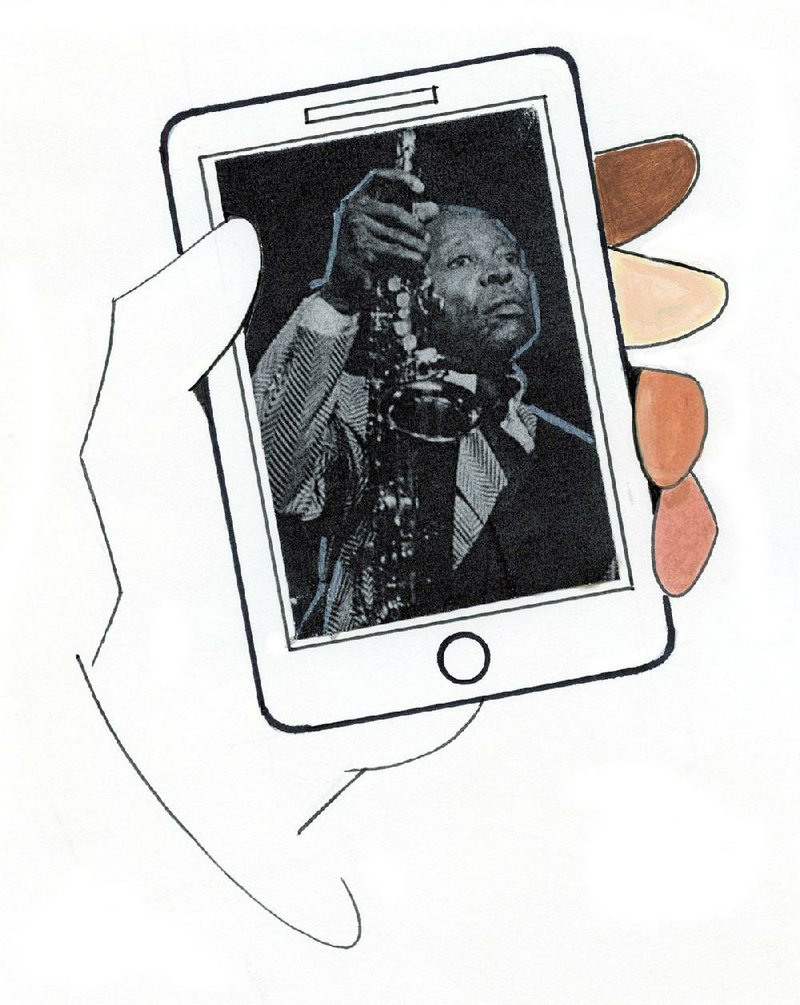From the Civil War era to Philander Smith College and the Arkansas Studies Institute, a new app tells more than a century of Little Rock's civil rights history.
The Arkansas Civil Rights History Tour is a free application for Apple and Android smartphones. The narrated, photo-illustrated tour covers 35 sites of historical importance as compiled by the City of Little Rock and University of Arkansas at Little Rock Institute on Race and Ethnicity.
"I imagine every one of us would learn something new if we view all 35 of these vignettes," Little Rock Mayor Mark Stodola said at the launch announcement in November at the university. The Central High School desegregation crisis of 1957 "is part of our legacy," the mayor said, "but it is not necessarily our destiny."
John Kirk, director of the Institute on Race and Ethnicity, said the app uncovers "a deeper history of civil rights in the city and the state that few people know about."
STEP AHEAD
The tour starts at West Ninth and Broadway downtown, once the center of the city's black business district. This area was the scene of Little Rock's "worst episode of racial violence in the 20th century," according to the tour's narration. In 1927, a white mob lynched John Carter, a 38-year-old black man. The killing escalated as a crowd of thousands gathered at Ninth and Broadway. The mob dispersed only when the governor called in the Arkansas National Guard.
The tour points to the Mosaic Templars Cultural Center, a museum of the Department of Arkansas Heritage at 501 W. Ninth, for exhibits on black achievement and adversity, 1868-1950.
Other stops include:
• Taborian Hall and Dreamland Ballroom at 800 W. Ninth St. The nearly century-old Taborian Hall -- which today houses Arkansas Flag and Banner -- stands as one of the last reminders of old Ninth Street. In the mid-1930s, the Dreamland Ballroom opened there; Cab Calloway, Ray Charles, Ella Fitzgerald and a roster of other famous black entertainers performed there.
• First Missionary Baptist Church at 701 S. Gaines St. Martin Luther King Jr. gave the church's 118th anniversary sermon in 1963, four months before he delivered his "I Have a Dream" speech in Washington.
• The L.C. and Daisy Bates Home National Historic Landmark at 1207 W. 28th St. Daisy Bates was a mentor to the Little Rock Nine, the first black students to attend Central High School in 1957. The tour recalls "several fiery crosses," the emblem of the Ku Klux Klan, burned on the lawn of this home where she lived with her husband and fellow civil rights activist husband, L.C. Bates.
• The Arkansas Capitol. In 1964, the building's cafeteria was declared a members-only club to avoid integration. In 2005, Arkansas Democrat-Gazette artist John Deering's sculpture of the Little Rock Nine, Testament, became "the first civil rights monument erected on the grounds of a Southern state capitol."
Apart from black history, the tour also looks at Concordia Hall. Now part of the Central Arkansas Library System's complex in the River Market District, it was a Jewish social club that reflected the prominence of Jewish immigrants in the late 1800s.
• The Mexican Consulate, 3500 S. University Ave., is emblematic of the federal Bracero Program that brought thousands of Mexican workers to the Arkansas Delta in the 1940s, continuing into the 1960s. The tour credits these Braceros for establishing the Delta's first minimum wage for farm workers.
• Trail of Tears Park, 5700 Asher Ave., remembers the forced migration of American Indians after the federal Indian Removal Act of 1830. Today, UALR's Sequoyah National Research Center "holds the largest collection of Native American expression in the world."
STEPS TO COME
Tour Buddy, an app development company headquartered in Savannah, Ga., produced the Arkansas Civil Rights History Tour. The company has built similar apps that lead visitors through the sights at historic Savannah, Diamond Head Crater in Hawaii and as far off as Melbourne, Australia.
The Arkansas Civil Rights History Tour app is "for tourists, obviously," as well as teachers and residents, says Carolyn Newbern of the Mayor's Tourism Commission.
"We hope this will inspire people to develop tours on other topics in other towns," she says.
FIRST STEPS
The Arkansas Civil Rights History Tour is available from the Apple App Store and Google Play Store, and from the Little Rock Convention and Visitors Bureau at littlerock.com/audiotour.
The bureau site offers a choice of English or Spanish narration as an audio file, and the narration script can be printed. Sidewalk decals mark sites along the way for people who want to see the actual landmarks.
Available, too, from the bureau website is the new app's predecessor, the Arkansas Political History Tour, an audio file.
A third way to see the sights is the Museum, Art and Heritage Trail of downtown Little Rock, a walking tour based on a map available at the Visitor Information Center at Historic Curran Hall.
Style on 01/05/2016

